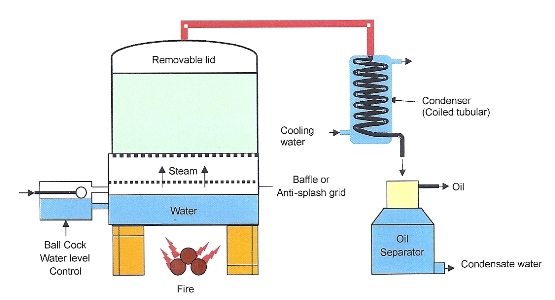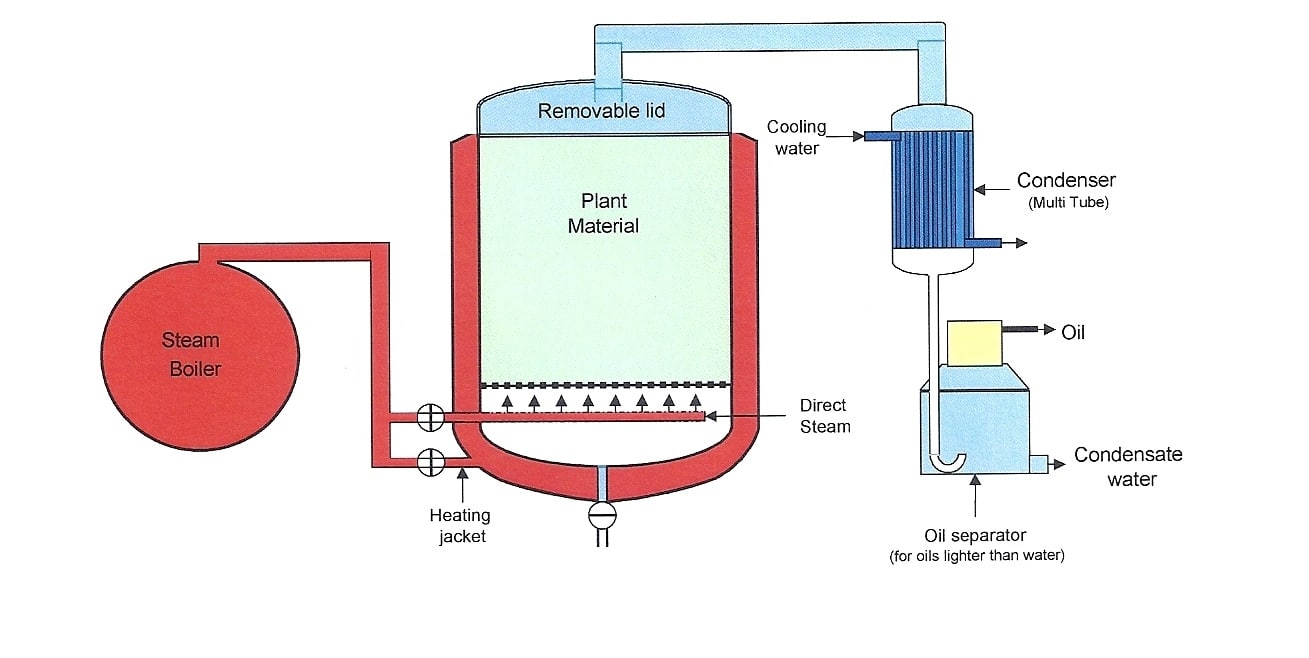Natural essential (or volatile) oils are the volatile,
odoriferous oils obtained from plants. These are found in special cells, glands
or ducts located in different parts of a plant such as the leaves, barks,
roots, flowers and fruits and sometimes in just one or two parts. Essential oils are isolated from various plant parts such
as leaves, peel, bark, root, grass, wood, resin, berries, seeds, flowers,
rhizome and buds. These essential oils are extracted by either
cold pressing or distillation.
Distillation of aromatic herbs implies vaporising or
liberating the oils from the plant cells in presence of temperature and
moisture and then cooling the vapour mixture to separate out the oil from
water. It is the most popular method in use today for producing majority of
essential oils throughout the world. The apparatus used typically consist of a
still or a tank in which the plant material is kept, condenser where the vapour
mixture cools down and a receiver where the cooled down liquid is collected.
There are three types of distillation
Water / Hydro-distillation
This process involves placing the
desired plant material in a still and then submerging it into water. The water
is then brought to boil. The steam
generated into the system penetrates the cell wall of the plant material and
the essential oil trapped is released and becomes volatile. The mixture of oil
and water vapours thus generated is cooled and two distinct layers of liquid
are formed. This is then collected and the oil is separated from the water. Hydro
distillation is used when plant material is dried and will not be damaged when
boiled. A special form of hydro distillation used in India is Deg-Bhapka. It is
used to make attars and fragrant water (hydrosols).
Water & Steam / Hydro-Steam distillation
In this process the plant
material is supported above the boiling water by a perforated grid or plate in
the tank. The water is boiled using a furnace or heating coils. The water
boils generating steam which passes through the plant material and releases
the essential oil in vapour form. This vapour mixture
is then passed through the condenser. The vapour cools down to form two distinct
layers of oil and water in the receiver. The oil is then separated. Typical example of this system is the Field Distillation Unit.
Steam / Direct distillation
In Steam Distillation steam is
directly applied to the plant material in the tank. The steam is generated
separately and introduced into the tank by a steam line. The steam passes through the plant material releasing
the volatile oil. This vapour mixture cools when it passes through the
condenser and gives two distinct layers of oil and water which is collected in
a receiver.


*અત્તર ને કોઈએ પૂછ્યું * *"તારી સુગંધ નું રહસ્ય શું ?"*
ReplyDelete*અત્તર કહે...........*। *"ફૂલો નું મૃત્યુ.....!"*
Congratulations to Team “Sugandhadhya”
Cool info
ReplyDelete